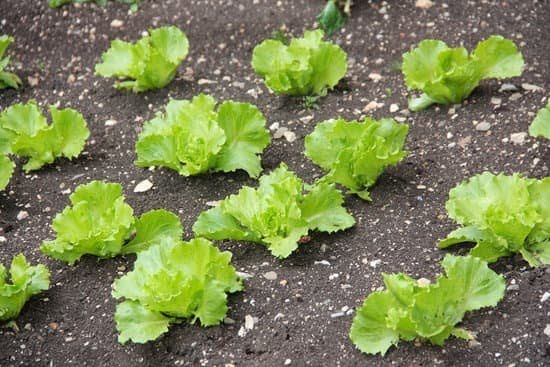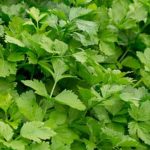Are you ready to venture into the world of vegetable gardening? Whether you’re a seasoned gardener or just starting out, these top 10 vegetable gardening tips will help you make the most of your efforts. From choosing the right location to harvesting your homegrown produce, we’ll cover everything you need to know for a successful and rewarding gardening experience.
There are numerous benefits to growing your own vegetables, including the satisfaction of eating fresh, organic produce, saving money on grocery bills, and reducing your environmental impact by reducing food miles. Not to mention the physical and mental health benefits of spending time outdoors and connecting with nature.
In this article, we’ll delve into each essential aspect of vegetable gardening, from selecting the best vegetables for your region and soil type to preventing pests and diseases, watering and fertilizing your garden, and ultimately enjoying the fruits of your labor. So grab your gardening gloves and let’s get started.
Choosing the Right Location for Your Vegetable Garden
When it comes to vegetable gardening, one of the most important decisions you can make is choosing the right location for your garden. The success of your vegetable garden largely depends on the location, so it’s crucial to choose a spot that receives an adequate amount of sunlight and has good soil drainage.
Ideally, your vegetable garden should receive at least 6-8 hours of sunlight per day, so make sure to select a spot in your yard or property that meets this requirement.
In addition to sunlight, it’s also important to consider the proximity to water sources. Vegetables need consistent watering, so having easy access to a water source will make maintenance much easier. Choosing a location close to a water spigot or having a convenient way to transport water to your garden area is essential.
Another important consideration when choosing the right location for your vegetable garden is protection from strong winds and extreme weather conditions. If possible, select an area that is sheltered from strong winds and has some natural protection from harsh weather elements. This will help prevent damage to your plants and ensure their healthy growth.
| Benefit | Data |
|---|---|
| Total sunlight per day | 6-8 hours |
| Watering schedule | Consistent watering needed |
| Protection from winds | Select sheltered area |
Essential Tools and Supplies for Vegetable Gardening
When it comes to starting a vegetable garden, having the right tools and supplies is essential for success. Here are some top 10 vegetable gardening tips for selecting the necessary items to get your garden off to a great start.
First and foremost, every gardener needs a set of basic hand tools, including a trowel, hand fork, and pruners. These tools will come in handy for tasks such as planting seeds, transplanting seedlings, and pruning plants as they grow.
In addition to hand tools, it’s important to have a good quality hose or watering can for keeping your garden adequately hydrated during dry spells. An adjustable hose nozzle can be useful for controlling water flow and pressure as needed.
A key element in successful vegetable gardening is having the right soil mixture. You may need to invest in compost, peat moss, or other organic matter to amend your soil and improve its texture and fertility. A pH testing kit can also be helpful for determining if your soil needs any adjustments before planting.
| Vegetable Gardening Supplies | Description |
|---|---|
| Hand Tools (trowel, hand fork, pruners) | Essential for tasks such as planting seeds & transplanting seedlings. |
| Hose or Watering Can | Necessary for keeping the garden adequately hydrated. |
| Organic Matter (compost, peat moss) | Improves soil texture & fertility. |
Selecting the Best Vegetables for Your Region and Soil Type
When it comes to starting a vegetable garden, one of the most crucial steps is selecting the right vegetables for your specific region and soil type. Taking into consideration factors such as climate, temperature, and sunlight is essential to ensure that your vegetables will thrive and produce a bountiful harvest. Here are some tips to help you select the best vegetables for your region and soil type.
First, research which vegetables are well-suited for the climate in your area. Some vegetables may be more tolerant to heat or cold, while others may require specific temperature ranges to grow successfully. Additionally, consider the average frost dates in your region to determine which vegetables can be planted early in the season without being affected by late frosts.
Next, take into account the type of soil you have in your garden. Different vegetables have varying soil requirements, so it’s essential to understand your soil composition before selecting which vegetables to plant. For example, root crops like carrots and potatoes thrive in well-draining sandy soils, while leafy greens like lettuce and spinach prefer fertile, loamy soils.
Furthermore, when choosing vegetables for your garden, consider the amount of sunlight available in your chosen location. Some vegetables need full sun exposure to flourish, while others can tolerate partial shade. Understanding the sunlight requirements of each vegetable will enable you to plan out the layout of your garden effectively.
By taking these top 10 vegetable gardening tips into consideration when selecting the best vegetables for your region and soil type, you’ll be setting yourself up for a successful and abundant harvest. It’s important to do thorough research on each vegetable’s specific requirements before making any decisions on what to plant in your garden.
With careful planning and attention to detail, you’ll be well on your way to enjoying a thriving and productive vegetable garden throughout the growing season.
Preparing the Soil for Planting
Improving Soil Quality
One of the top 10 vegetable gardening tips is to ensure that your soil is in optimal condition for planting. This can involve improving its quality by adding organic matter such as compost, aged manure, or shredded leaves. These additions will help to improve the structure, drainage, and nutrient content of the soil, providing a healthy environment for your vegetables to thrive.
Testing Your Soil
Before planting, it’s important to test your soil to determine its pH level and nutrient content. You can purchase a DIY soil testing kit or send a sample to a professional laboratory for analysis. Once you have this information, you can make any necessary adjustments by adding amendments like lime if the pH is too low or sulfur if it’s too high. Testing your soil will ensure that it provides an ideal growing environment for your chosen vegetables.
Creating Raised Beds
Another beneficial tip for preparing the soil for planting is to create raised beds. This involves building up the soil into mounded rows or constructing framed beds filled with enriched soil to provide better drainage and warmer temperatures, which can extend the growing season. Raised beds also make it easier to maintain good soil structure and fertility over time.
By taking these steps to prepare your garden soil, you’ll be setting the stage for a successful vegetable garden with healthy, productive plants throughout the growing season. These preparations also contribute greatly towards preventing common issues such as poor yield and disease infestations related to unsuitable growing mediums.
Planting and Maintaining Your Vegetable Garden
Proper Spacing and Companion Planting
When planting your vegetables, it’s crucial to provide them with enough space to grow. Overcrowding can lead to competition for nutrients and sunlight, resulting in stunted growth and lower yields. Be sure to follow spacing recommendations for each type of vegetable. Additionally, consider companion planting – the practice of planting certain vegetables together to enhance growth and repel pests.
Weed Control
Weeds can compete with your vegetables for water, sunlight, and nutrients, so it’s important to keep them in check. Regularly weed your garden beds to prevent them from overtaking your crops. Use mulch to help suppress weed growth and retain soil moisture.
Regular Maintenance
Regular maintenance is key in ensuring the health of your vegetable garden. This includes regularly inspecting plants for signs of pest infestation or disease, pruning as needed, and providing support for vining plants such as tomatoes or cucumbers. Stay on top of any issues that may arise to prevent them from escalating into more significant problems.
By following these top 10 vegetable gardening tips for planting and maintaining your vegetable garden, you can enjoy a successful growing season with an abundance of homegrown produce. Remember that each garden is unique, so don’t be afraid to experiment and find what works best for you and your particular growing conditions. With a little time and effort, you’ll be enjoying the fruits – or rather, veggies – of your labor in no time.
Pest and Disease Prevention and Control
One of the biggest challenges in vegetable gardening is dealing with pests and diseases that can threaten the health and productivity of your plants. However, there are several effective strategies you can use to prevent and control these issues.
To start, practicing good garden hygiene is essential for keeping pests and diseases at bay. This includes removing any dead or diseased plant material, regularly weeding your garden beds, and cleaning up any debris that could harbor pests or pathogens. Additionally, rotating your crops each year can help break pest and disease cycles, reducing the likelihood of problems in the future.
Another important tip for preventing pest and disease issues is to choose disease-resistant varieties whenever possible. When selecting seeds or seedlings for your garden, look for options that are known to be less susceptible to common pests and diseases in your area. This simple step can go a long way in protecting your plants from potential harm.
Finally, consider using natural remedies like companion planting or organic pest control methods to further protect your vegetable garden. By strategically planting certain herbs or flowers alongside your vegetables, you can help deter pests and attract beneficial insects that will act as natural predators. Additionally, using organic products like neem oil or insecticidal soap can effectively control common garden pests without harming the environment or beneficial insects.
As you implement these top 10 vegetable gardening tips for pest and disease prevention and control, you’ll be better equipped to maintain a healthy and thriving garden throughout the growing season. By taking proactive measures to protect your plants from potential threats, you’ll increase the likelihood of a successful harvest while minimizing the need for harsh chemical interventions.
Watering and Fertilizing Your Vegetable Garden
Watering and fertilizing are essential components of successful vegetable gardening. Properly watering your vegetable garden ensures that your plants receive the necessary moisture to thrive, while fertilizing provides them with the nutrients they need to grow and produce a bountiful harvest. Here are some top 10 vegetable gardening tips for watering and fertilizing your garden.
First, it’s important to water your vegetable garden deeply and infrequently. This encourages the plants’ roots to grow deeper into the soil in search of water, making them more resilient during dry periods. Consider installing a drip irrigation system or soaker hoses to deliver water directly to the base of your plants, minimizing evaporation and waste.
When it comes to fertilizing your vegetable garden, organic options are best for ensuring healthy soil and nutritious produce. Compost, manure, and organic fertilizer blends can be applied before planting and as a side dressing throughout the growing season. Remember to follow package instructions for application rates and frequencies, as over-fertilization can harm your plants.
Lastly, pay attention to signs of overwatering or underwatering in your vegetable garden. Wilting, yellowing leaves, or stunted growth can indicate a problem with moisture levels. Similarly, excessive fertilizer can cause burning or yellowing of leaves. Monitoring the condition of your plants will help you adjust your watering and fertilizing practices as needed for optimal growth and productivity.
By following these top 10 vegetable gardening tips for watering and fertilizing, you’ll be on your way to a thriving garden full of delicious homegrown vegetables. Remember that consistency is key when it comes to providing water and nutrients for your plants, so stay attentive to their needs throughout the growing season.
Harvesting and Storing Your Homegrown Vegetables
Once your vegetables have reached maturity, it’s time to harvest them for consumption. Proper harvesting techniques and storage methods will ensure that your homegrown produce stays fresh and delicious for as long as possible.
Here are some top 10 vegetable gardening tips for harvesting and storing your homegrown vegetables:
1. Harvest at the Right Time: Each type of vegetable has a specific stage of ripeness at which it should be harvested for the best flavor and texture. Research the optimal harvest time for each vegetable you are growing.
2. Use Sharp Tools: When harvesting your vegetables, use sharp pruners or shears to make clean cuts. This will prevent damage to the plant and minimize the risk of disease.
3. Store Properly: Proper storage is essential for extending the shelf life of your homegrown vegetables. Some vegetables, like carrots and beets, can be stored in a cool, dark place with high humidity, while others, such as tomatoes and peppers, should be kept at room temperature.
4. Utilize Preserving Techniques: If you have an abundant harvest, consider preserving your vegetables through canning, freezing, or pickling to enjoy them throughout the year.
5. Rotate Your Stock: Regularly check on stored vegetables and use the ones that are nearing their expiration date first to avoid spoilage.
6. Label Everything: Labeling your harvested vegetables before storing them will help you keep track of when they were picked and which ones need to be used first.
7. Keep an Eye Out for Spoilage: Regularly inspect your stored vegetables for any signs of spoilage or rot. Remove any spoiled items immediately to prevent them from affecting others in storage.
8. Embrace Root Cellaring: If you have a root cellar or cool basement, consider utilizing these spaces for long-term storage of root vegetables like potatoes and onions.
9. Clean Before Storage: Before storing your vegetables, gently brush off any excess soil or debris from their surfaces to prevent mold growth during storage.
10. Share Your Harvest: If you find yourself with an abundance of homegrown produce, consider sharing with friends and neighbors or donating to local food banks to avoid wastage.
Conclusion
In conclusion, following these top 10 vegetable gardening tips can greatly increase your chances of success and enjoyment in your gardening endeavors. By choosing the right location, using the essential tools and supplies, selecting the best vegetables for your region and soil type, preparing the soil properly, and maintaining your garden with proper watering and fertilizing techniques, you can set a solid foundation for a bountiful harvest.
Additionally, being proactive in pest and disease prevention and control, as well as knowing when and how to harvest and store your homegrown vegetables, are crucial aspects of vegetable gardening that can contribute to a successful outcome. With dedication and patience, you can enjoy the fruits of your labor by relishing in the fresh produce from your very own garden.
Remember that vegetable gardening is not just about producing food; it also provides mental health benefits such as stress relief, increased physical activity, an opportunity for outdoor time with exposure to fresh air and sunshine. So take the time to savor both the process of planting as well as enjoying the rewards that come from having a thriving vegetable garden. By utilizing these top 10 vegetable gardening tips, you will be on your way to becoming a successful gardener.
Frequently Asked Questions
What Is the Best Vegetable Garden Advice?
The best vegetable garden advice is to start small and grow what you and your family like to eat. It’s also important to give your plants enough space, water them regularly, and keep an eye out for pests.
What Are the 10 Easiest Vegetables to Grow?
The 10 easiest vegetables to grow include tomatoes, lettuce, cucumbers, carrots, radishes, green beans, zucchini, peppers, spinach, and peas. These vegetables are relatively low-maintenance and suitable for beginners.
What Is the Best Layout for a Vegetable Garden?
The best layout for a vegetable garden depends on the available space and individual preferences. However, a common layout is to organize crops in rows or raised beds with ample spacing between each plant for easy access and proper sunlight exposure. Additionally, consider companion planting to maximize space and yield in the garden.

If you’re looking to get into vegetable gardening, or are just looking for some tips on how to make your current garden better, then you’ve come to the right place! My name is Ethel and I have been gardening for years. In this blog, I’m going to share with you some of my best tips on how to create a successful vegetable garden.





